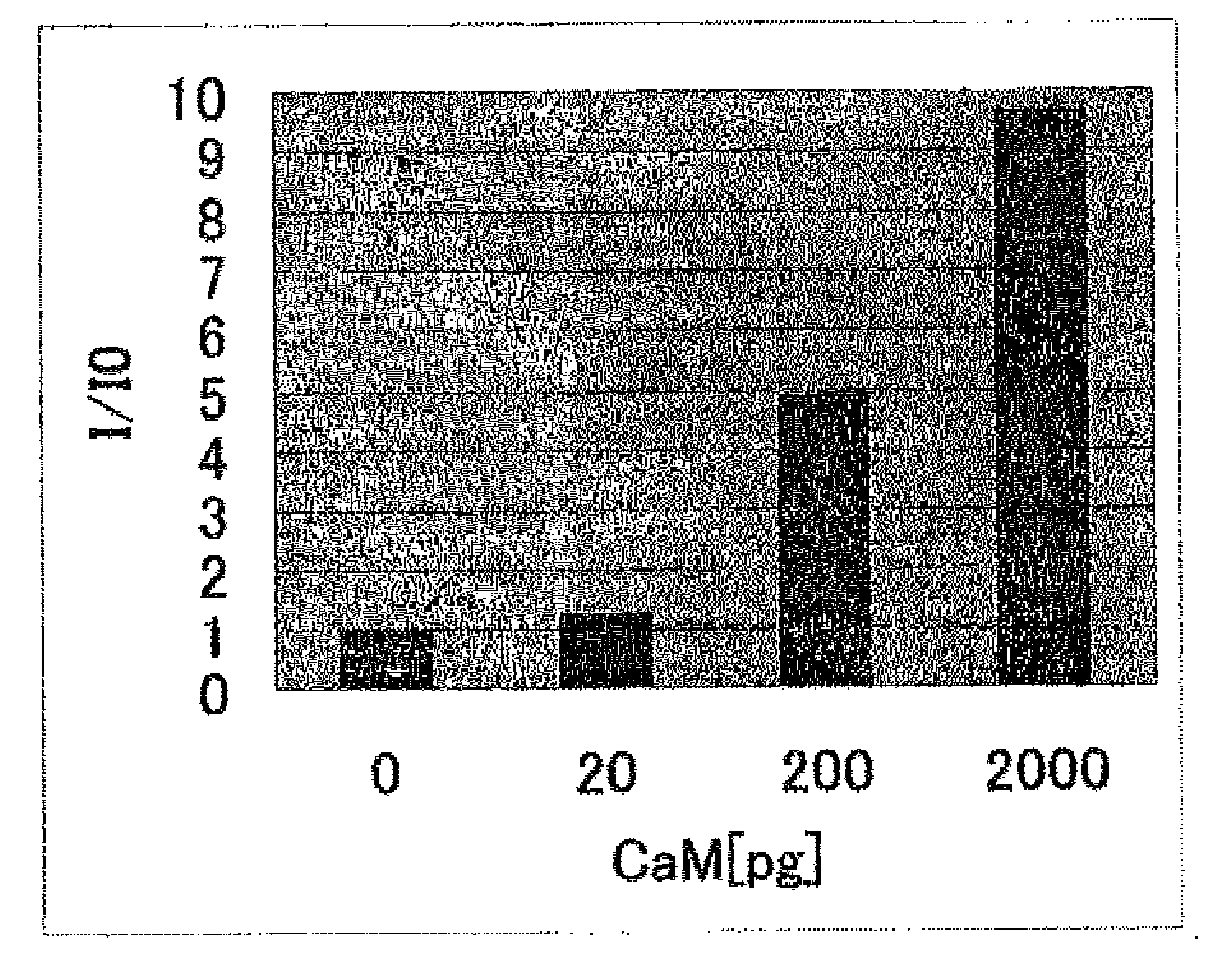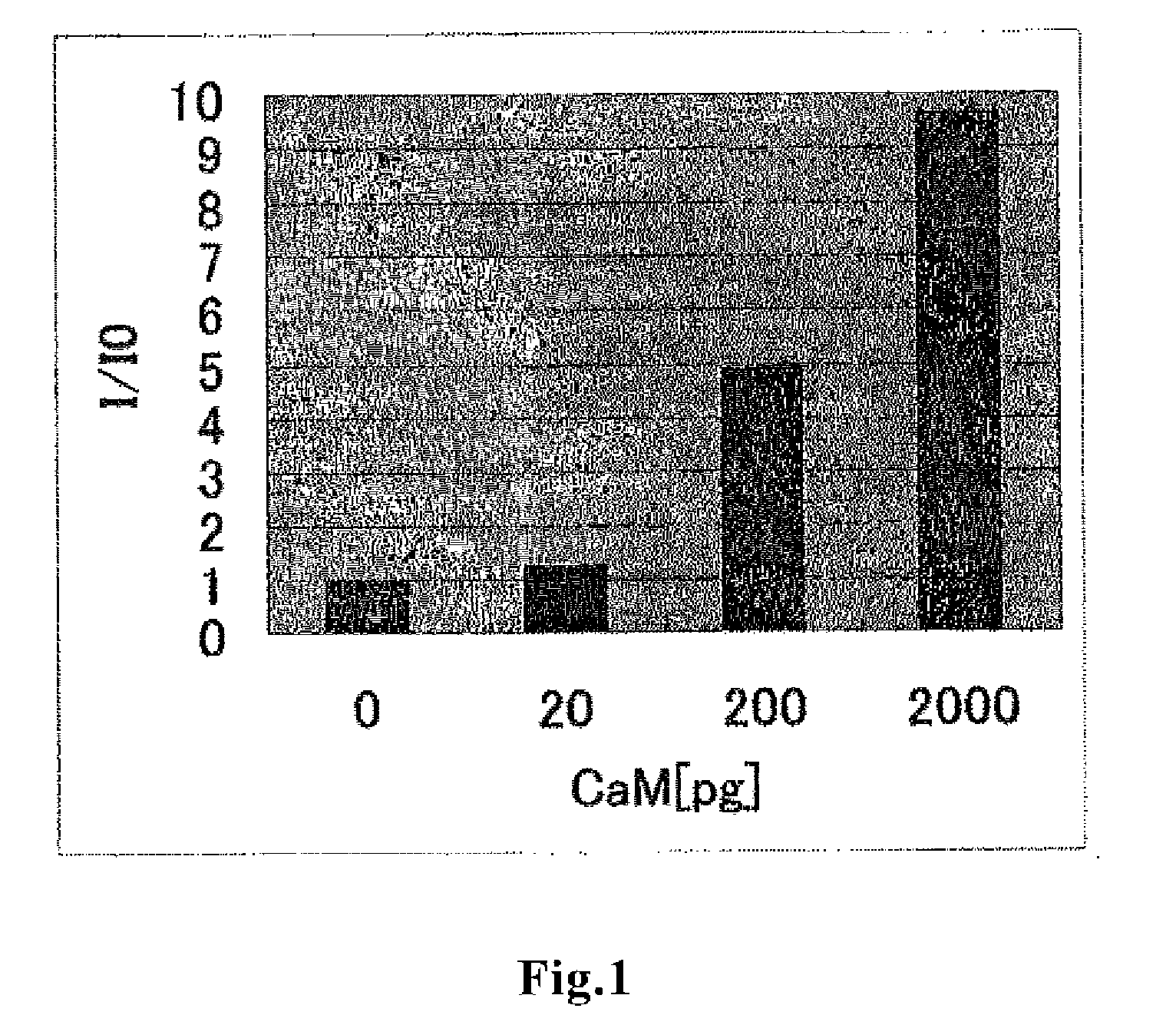Substrate for biochip and biochip
a biochip and substrate technology, applied in the field of biochips, can solve the problems of long time, high cost, difficult stabilization and synthesis of long oligonucleotides, etc., and achieve the effects of easy manufacture, good flatness and surface precision, and easy immobilization
- Summary
- Abstract
- Description
- Claims
- Application Information
AI Technical Summary
Benefits of technology
Problems solved by technology
Method used
Image
Examples
example 1
Production of Substrate for Biochips
[0018]A high purity Al—Mg alloy plate (Mg content: 4% by weight) with a thickness of 1.2 mm was sized to 26 mm×76 mm by punching with a press. A plurality of the plates were stacked and annealed under pressure under an atmosphere at 340° C., thereby removing strain and attaining a flatness of not more than 5 μm. Thereafter, working of the end faces and chainfer (specifically, angle 45°, a length: 0.2 mm) was performed to prepare plates with a size of 25 mm×75 mm. Then each plate was ground with a double side grinding machine 16B produced by Speedfam, in which a sponge grindstone was mounted, to attain a thickness of 0.98 mm and a degree of parallelization of not more than 1 μm. The resulting plate was then subjected to, in the order mentioned, defatting, etching, acid activation, and zincate treatments.
[0019]More particularly, the plate was sequentially immersed in alkaline degreasing liquid AD-68F (50° C.) produced by Uyemura for 5 minutes, in su...
example 2
Production of Biochip and Measurement of Using the Same
[0021]As the peptide to be immobilized to the biochip, a fluorescently labeled peptide having the following sequence was chemically synthesized: Ac-Cys-Gly-Lys(FAM)-Gly-Leu-Lys-Lys-Leu-Leu-Lys-Leu-Leu-Lys-Lys-Leu-Leu-Lys-Leu-Lys(TAMRA)-Gly-NH2. Here, both “FAM” and “TAMRA” are fluorescent dyes. When FAM is excited with light, the excitation energy of FAM is transferred to TAMRA depending on the distance between FAM and TAMRA, and TAMRA emits fluorescence (called fluorescence resonance energy transfer, FRET-fluorescence). When a protein binds to the peptide, the helix structure of the peptide is immobilized, so that FRET florescence is increased. FRET is a phenomenon that energy is transferred from a donor molecule (FAM in this case) in the excited state to an acceptor molecule (TAMRA in this case) in the ground state, and fluorescence from the acceptor is observed. The peptide is known to specifically bind to calmodulin (CaM). U...
PUM
| Property | Measurement | Unit |
|---|---|---|
| surface roughness | aaaaa | aaaaa |
| Ra | aaaaa | aaaaa |
| surface flatness | aaaaa | aaaaa |
Abstract
Description
Claims
Application Information
 Login to View More
Login to View More - R&D
- Intellectual Property
- Life Sciences
- Materials
- Tech Scout
- Unparalleled Data Quality
- Higher Quality Content
- 60% Fewer Hallucinations
Browse by: Latest US Patents, China's latest patents, Technical Efficacy Thesaurus, Application Domain, Technology Topic, Popular Technical Reports.
© 2025 PatSnap. All rights reserved.Legal|Privacy policy|Modern Slavery Act Transparency Statement|Sitemap|About US| Contact US: help@patsnap.com


